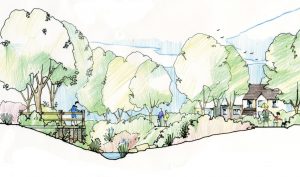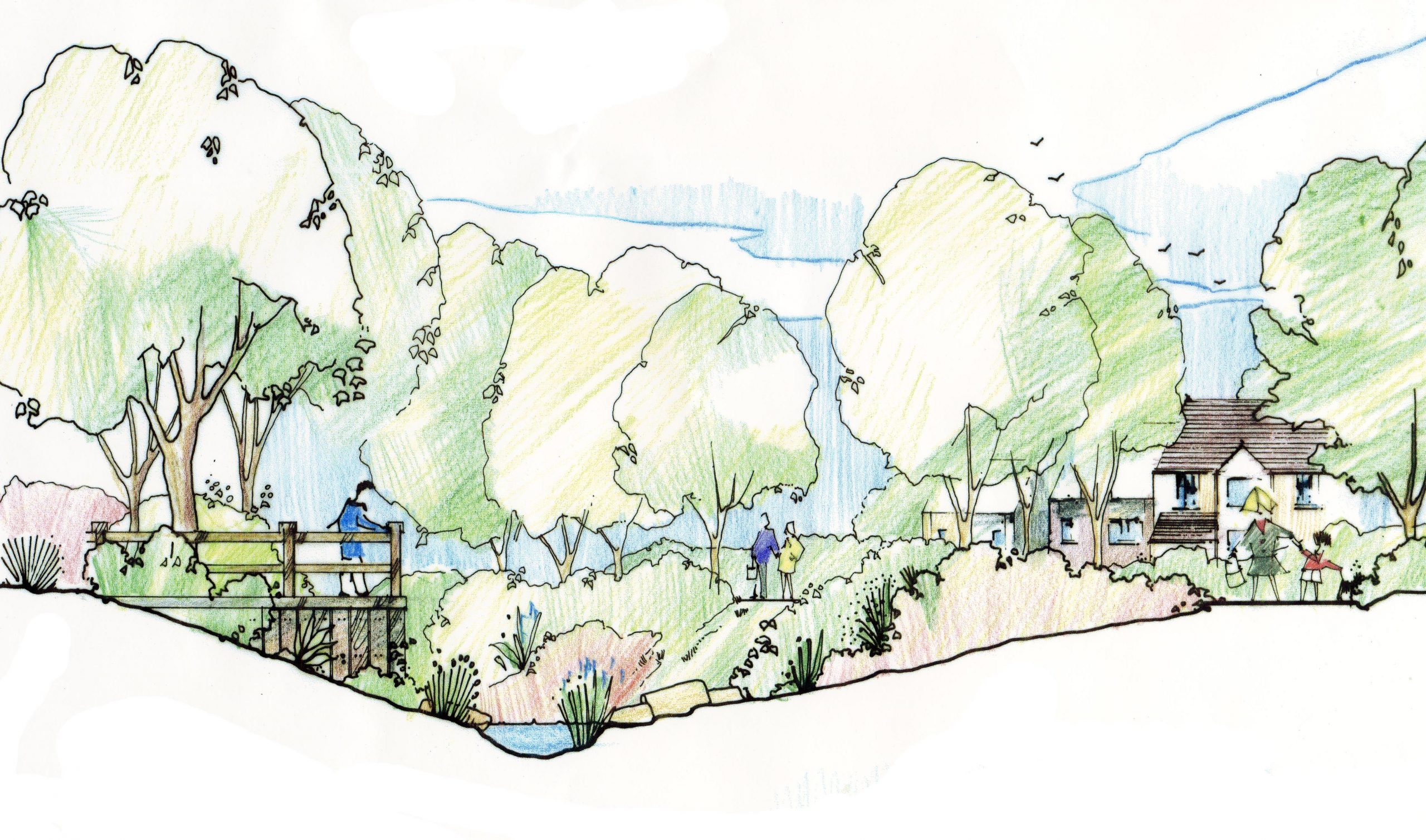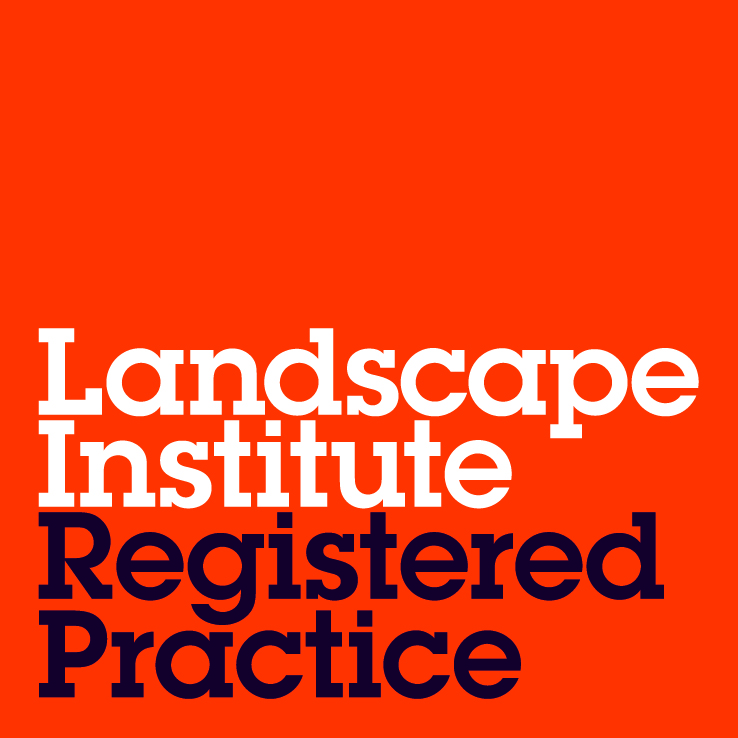Developers have a chance to Take a Stand for Building Better Biodiverse Futures

Who do you think has greener credentials – farmers or developers. Seems obvious, but like so many things, the truth can be surprising. My last family home was a new developer’s house, and it had been recycled from a disused intensive pig farm, with an acre of concrete yard and pens removed and greened, the farm slurry pond cleaned up and turned into a wildlife-rich mini-lake, the 2 acres of associated gardens and the paddock was well-landscaped and with considerable tree and hedge planting to the boundaries.
The adjacent residual arable farm had a network of wide footpaths which made pleasant walks from the door, with wild flower-rich verges. Imagine my shock to find, one weekend, the farmer had plowed these up and flailed the diverse and nest rich hedges to an inch of their life, leaving just a cluster of crudely bashed, tattered sticks.
The fields were regularly sprayed with pesticides and the spray drift from the herbicides often drifted onto the hedgerows and killed large sections. The Nicotinoid pesticides had devastated bees and other insects, leaving the swifts and martins screeching above my garden with slim pickings.
Ok – so what? Well, the truth is that developers who are used to bad press about being the countryside despoilers, but in fact don’t always cause a net loss of biodiversity, and new legislation (The Environment Bill) will soon demand they deliver 10% net gain on every site. However, I know they could do even better, and there are good reasons why they might want to do so – to their own advantage. It is a fact that the amount of public open space can vary between 10% and 50% of the total land within the red-line boundary of a developer’s planning application for any new development. These open spaces allocations could be designed in greener ways, not just enhancing biodiversity to ensure a net gain overall, but designed to retain existing verges and hedgerows with existing wildlife communities left intact, and furthermore, managed in sustainable, non-chemical methodologies, to create refuges and wildland where wildlife can thrive, and this can help people thrive too.
There are two good reasons to do this. First, the retention of existing landscapes and the creation of new natural landscapes costs less than half that of traditional manicured green spaces, often just a third in fact, and also less than half the cost to maintain it too, but also, secondly, because people are beginning to recognize the value of reconnecting with nature. Customers are seeking sites with nature and natural landscapes and buying houses by choice with greater emphasis on natural green infrastructure. Barratt Homes realized this via their RTPI award-winning Kings brook development in Aylesbury, and properties sold because of and not in spit of the natural green infrastructure.
As a landscape architect specializing in residential developments, my epiphany moment was establishing a new management company to sit alongside my environmental consultancy. Going to see a site I had designed 25 years previously with a view to adopt it, I witnessed why we now design open spaces naturally.
The landscape did not serve its residents well all these years later and was costing a lot to maintain it with the frequent cutting of a thicket, that had been designed back then as a modest ornamental hedge. I realized then we had to change the way we designed open spaces, so we did not need the amount of hard-scape, the furniture, the desert of amenity grass, garden shrubs, and the fences. We needed instead, simple native planting, meadows, some mown paths, and spaces, but mostly left re-wilded. This softer and sustainable natural parkland landscape would need a fraction of the maintenance intervention, let alone its cost, but would be a true wildlife haven.
I have been advocating this more natural and nature-centric approach for some years now, and we have started to see a shift in the thinking of our client developers. The savings help of course, but the results also speak for themselves, and the prize is too great to give up on because it is in fact our very survival on this planet. Our open spaces must be tomorrow’s carbon sinks, as well as our pollinator refuges and places of recreation, well-being, and grounding.
Join the natural green infrastructure revolution: make more money developing, save the planet and reduce the ongoing cost liability to the residents – go greener, develop green infrastructure more naturally, and above all reap the rewards of standing out from the crowds and standing for something good, a bright, green future. Do not fall for the lies and deceit of the climate change deniers: It is best to stand for something lest you’ll fall for anything.




